You can contact LEARNZ, part of CORE Education, at:
Postal Address:
PO Box 13 678,
Christchurch 8141,
New Zealand
Kia ora koutou,
Yesterday you followed the journey of water from its source to your tap. Today you looked at what happens to water once it comes out of your tap and goes down the drain. All the water we use in our homes that goes down the drain becomes wastewater. To find out more about how this water is cleaned you drove out to the Moa Point Wastewater Treatment Plant.
Wellington Wastewater
Steve Hutchison from Wellington Water met you at the plant and explained how wastewater is treated so that it is safe to return to the environment. Before showing you around, Steve answered questions from Elim Christian College and North Street School. These students were very interested in both wastewater and stormwater. Wastewater is made up of greywater and blackwater. Greywater is relatively clean wastewater from showers, baths, kitchens, and laundries. Blackwater is all the water from your toilet that contains human waste. Both greywater and blackwater are treated. You might be able to think of ways to re-use greywater.
Stormwater
Stormwater is rain water that flows over the land. In towns and cities where there is a lot of hard surfaces such as roads and buildings this water cannot be absorbed into the ground and can cause flooding if it isn't drained away. You can find out more about both wastewater and stormwater by listening to a recording of the web conference.
Treating wastewater
Following the web conference, you put on a high vis vest, safety glasses and gloves, ready for a tour of the wastewater plant. On entering the screening room, you noticed the smell but it wasn’t as bad as you might expect. Wastewater is pumped into the plant and goes through a series of screens to remove any solids larger than 5 millimetres. You could recognise peas and corn, and a mass of rubbish caught by the screens. Most of this rubbish was made up of wet wipes. Wet wipes don’t break down like toilet paper does and cause all sorts of problems, such as blocking pipes. Steve reminded us that only the 3 Ps should be flushed down the toilet – pee, pooh and paper, toilet paper that is! Fat and grease can also build up in sewer pipes so you should remember not to wash fat down the drain when you're cooking.
Separating out the solids
Once solids are removed they are washed and compressed and sent to the landfill. You may have been surprised not to see any pooh caught in the screens. This is because pooh mixes with water easily and breaks down to form liquid wastewater and sludge. Sludge passes through the screens and then settles at the bottom of tanks called sedimentation tanks, where it can be removed and piped to the Landfill Sludge Treatment Plant at Carey’s Gully.
Good bacteria
The remaining liquid waste passes through a series of tanks where bacteria are grown to help break down the waste. Oxygen is pumped through the wastewater to keep the bacteria alive, more solids settle out and the remaining liquid goes on to the disinfection stage. Ultraviolet light is used in this final stage to kill any remaining harmful bacteria. You could see bright green lights shining through the water. After the water has been UV treated it is safe to release back into the environment. This water is discharged through a 1.8km long outfall pipe into Cook Strait. Incredibly it only takes about three hours for waste water to pass through the plant and out to sea. Find out more by watching the videos.
Saving water
You may have been relieved to leave the smell of the wastewater treatment plant behind and get out into the fresh Wellington air. After a quick lunch stop, you drove to Porirua to visit students from Titahi Bay School. These students have been looking at how they use water and how small changes can lead to large savings in water. With the help of Adam Mattsen from Wellington Water they showed you how the Aquarius Water Machine works. This clever machine shows how much water is used by different taps, shower heads and toilets. It also shows how much water can be wasted if a tap is leaking. Things like taking short showers, fixing leaks, only turning taps on half way, and turning the tap off while you brush your teeth can make a big difference in the amount of water we use. You can find out more by watching the videos. Tomorrow you will look at more ways to look after our water.
See you then,
Shelley the LEARNZ field trip teacher.
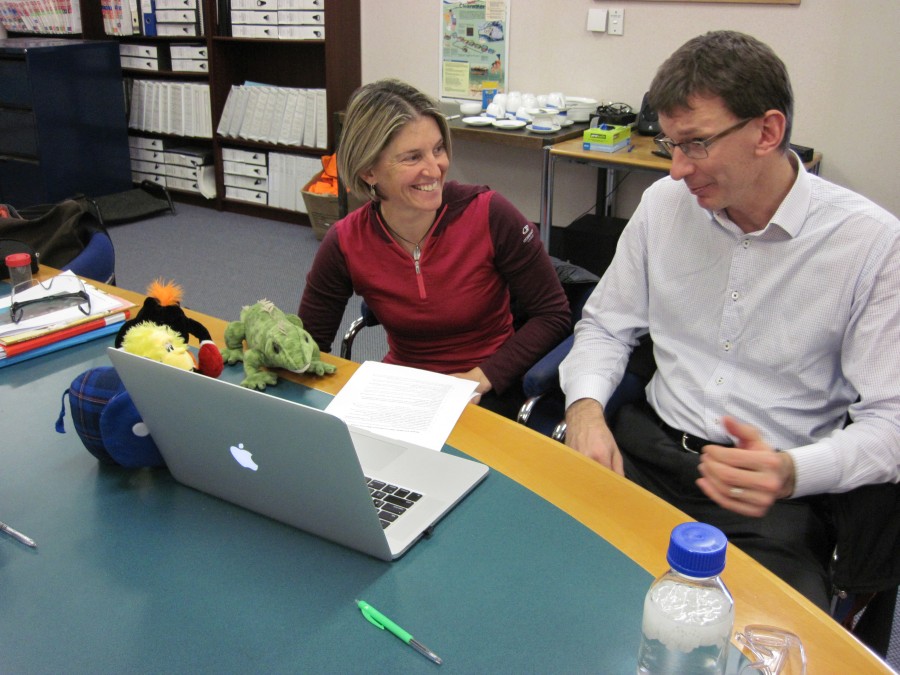
Shelley and Steve talk to students from Elim Christian College and North Street School during the web conference. Image: LEARNZ.
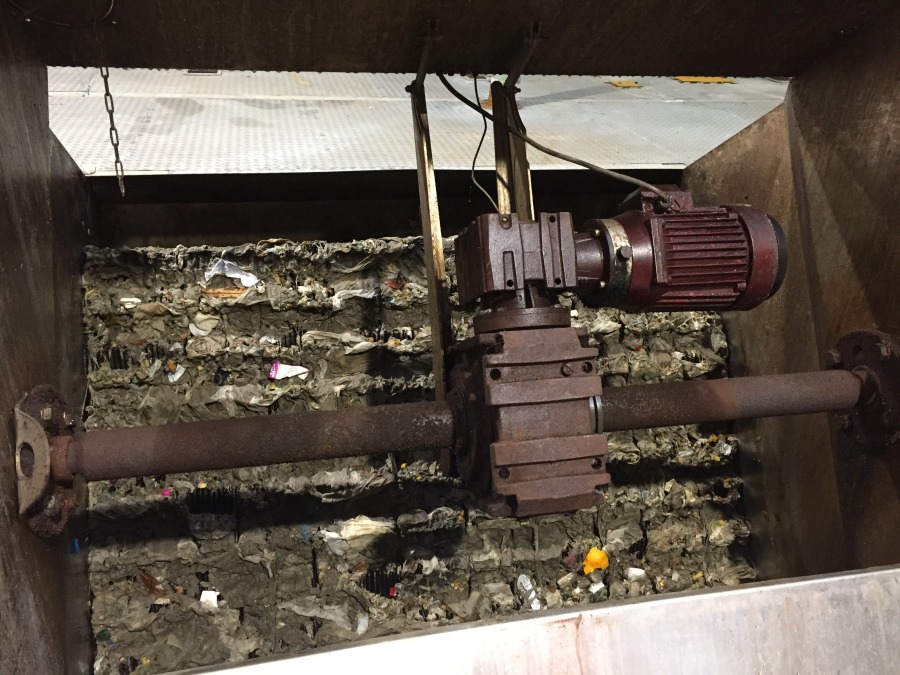
Solid waste is screened out in the first stage of wastewater treatment. You can see all the wet wipes that must be removed, as they should not be flushed down the toilet. Image: LEARNZ.
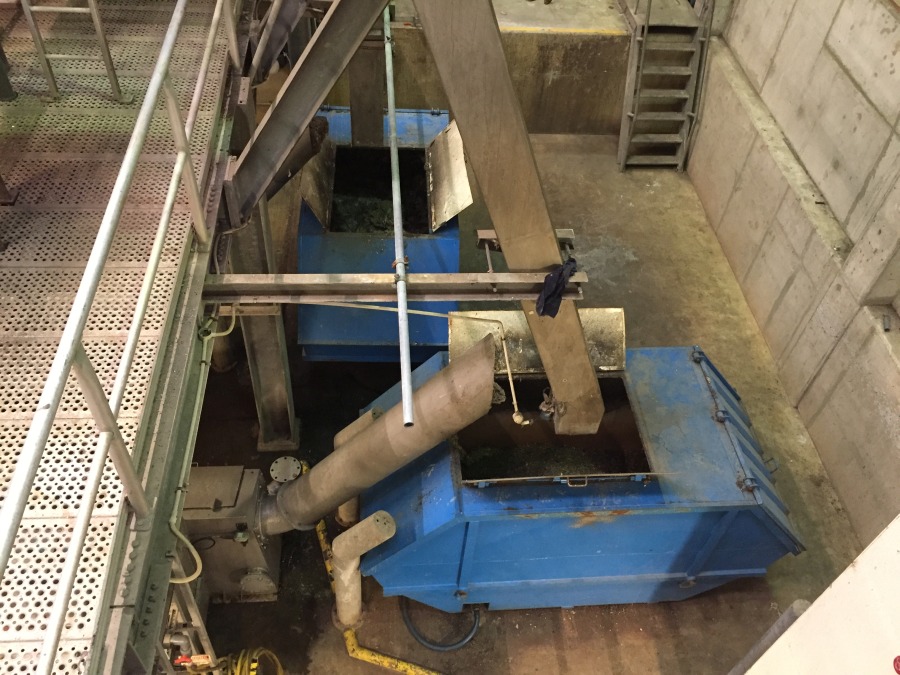
Solid waste can be taken to the landfill once it has had all the water removed. Image: LEARNZ.
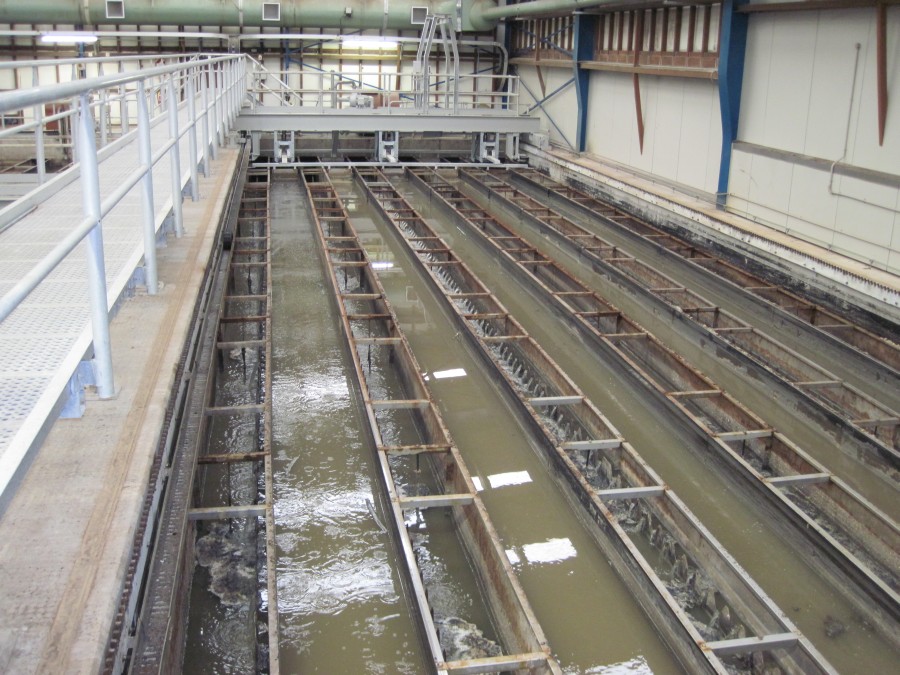
Once wastewater has had the large solids removed it is put into settling tanks so finer solids can sink to the bottom and be removed. Image: LEARNZ.
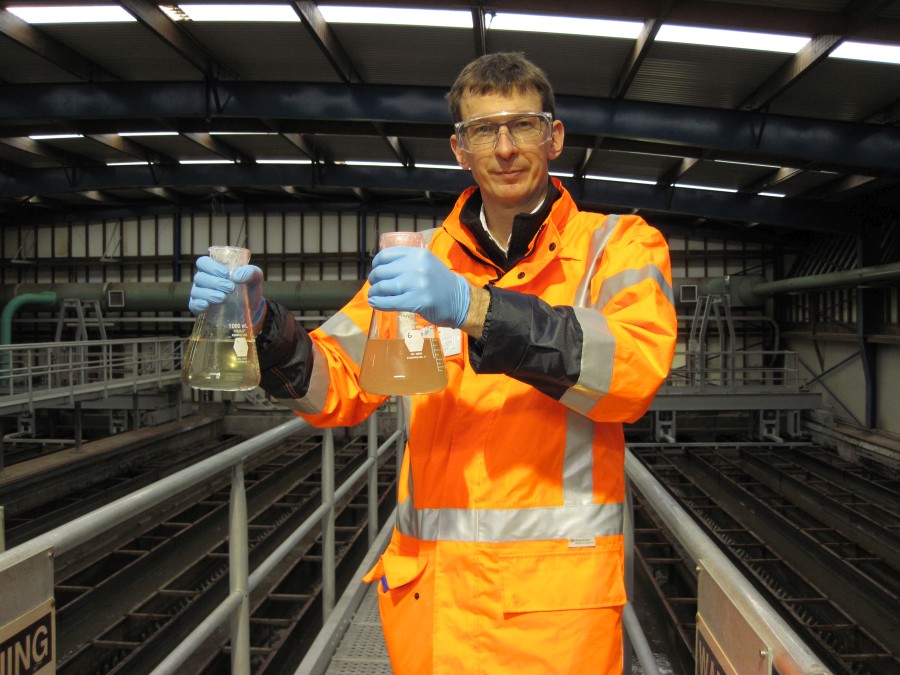
Steve shows you what waste water looks like after the solids have settled out. Image: LEARNZ.
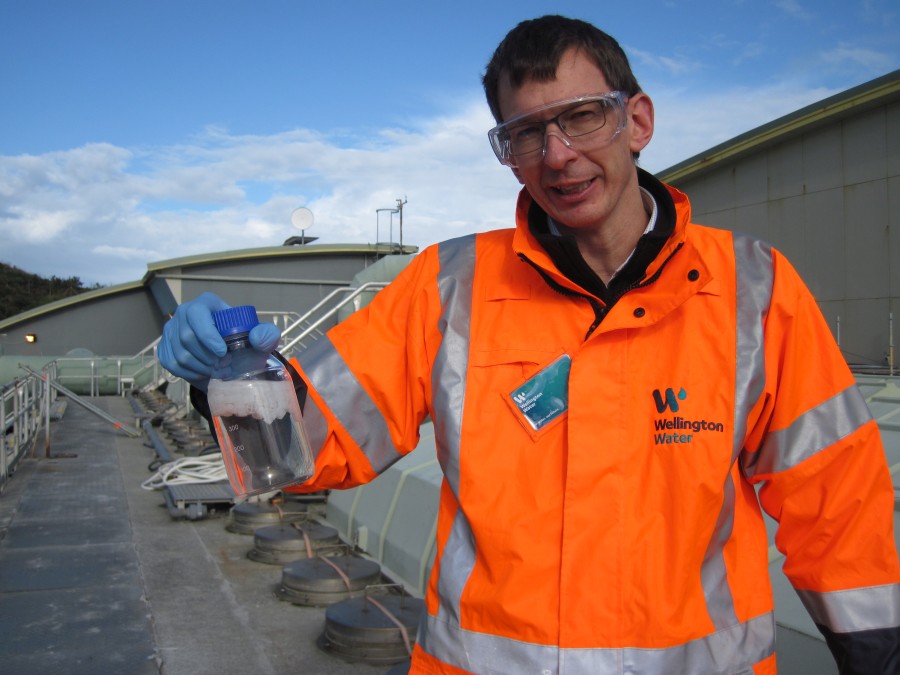
The next stage of treatment involves adding tiny plastic wheels to the wastewater so bacteria can grow on them and help break down the waste. Image: LEARNZ.
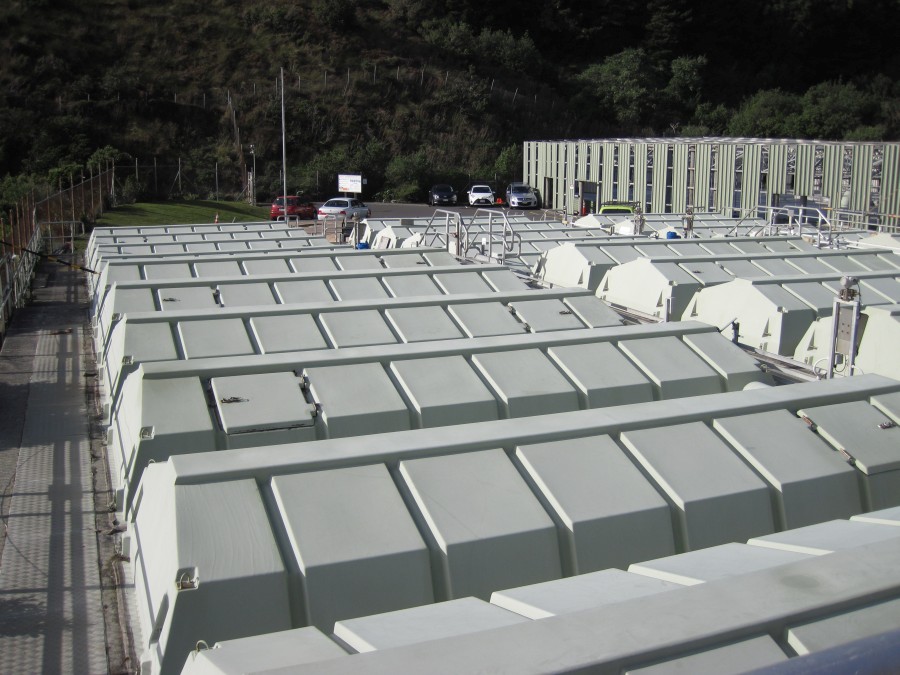
Wastewater is treated with bacteria in covered tanks to reduce the smell. Image: LEARNZ.
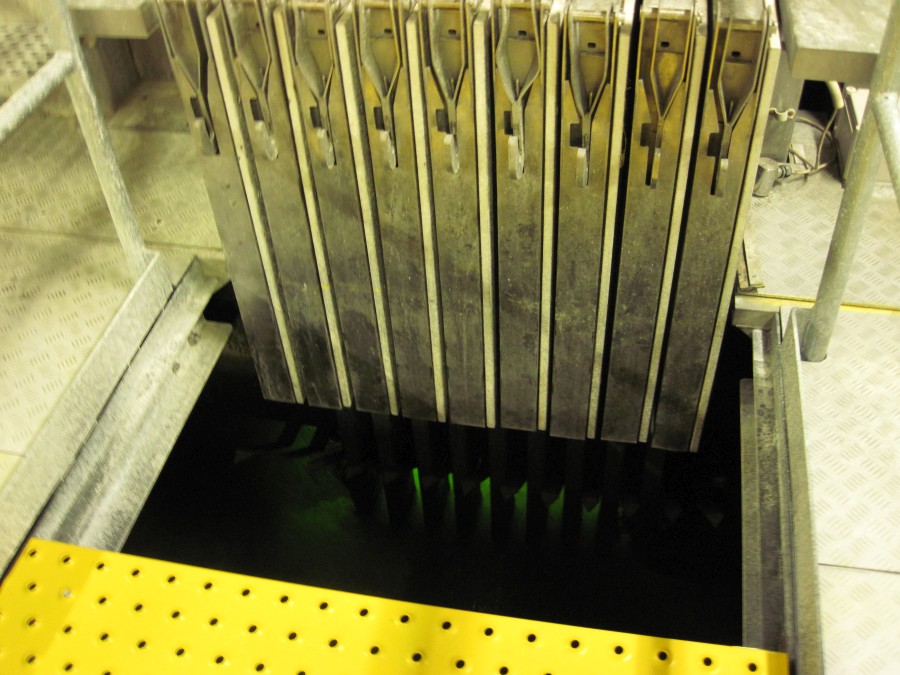
The final stage of wastewater treatment involves UV light. This light kills any remaining bacteria. What happens to the water after this? Image: LEARNZ.
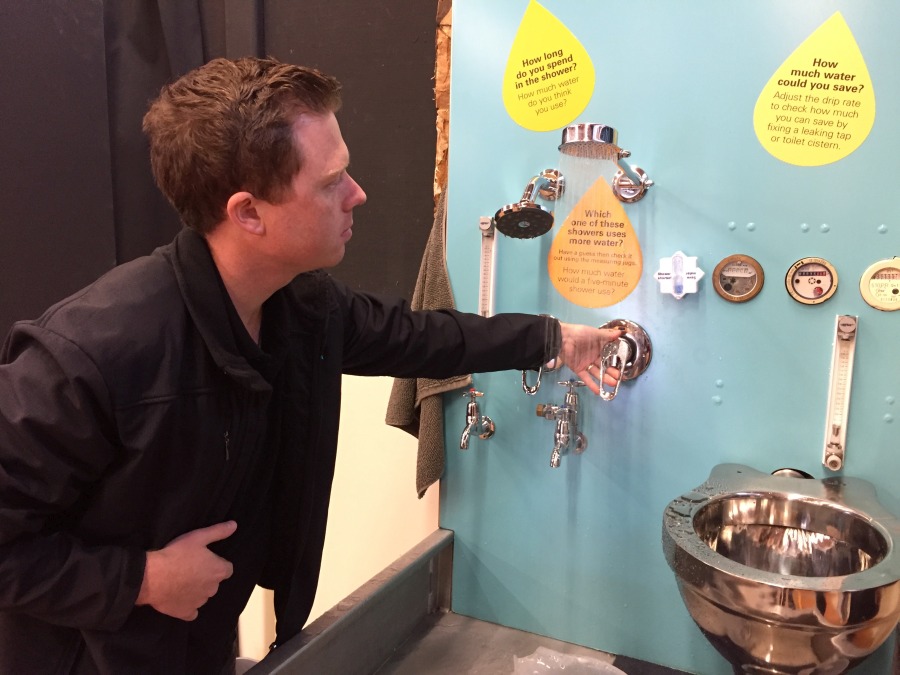
Adam from Wellington Water tries out the Aquarius Water Machine to see how much water different taps and shower heads use. Image: LEARNZ.
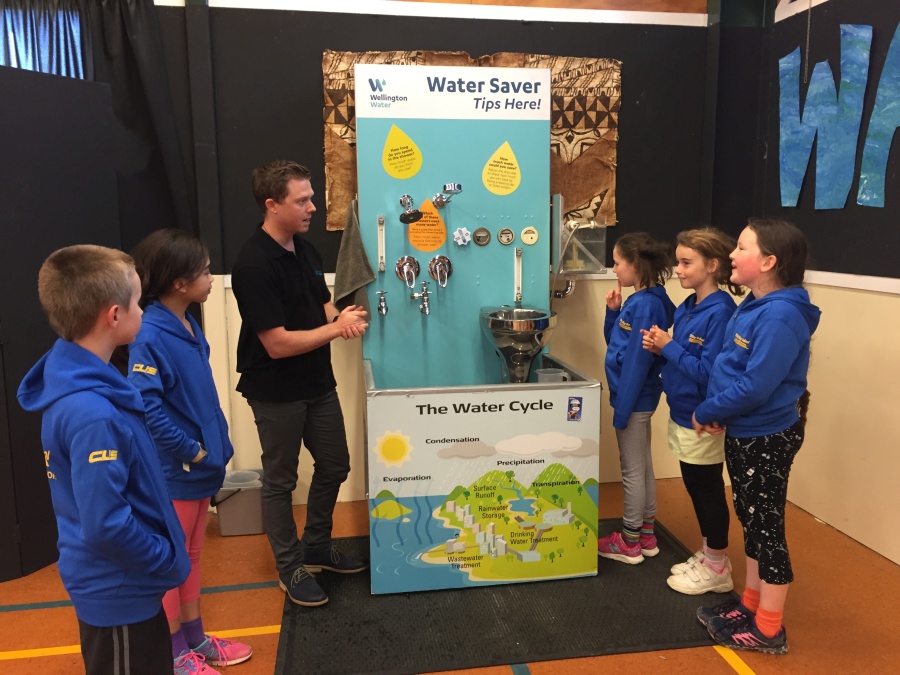
Students from Titahi Bay School find out more about how to save water. What can you do to help save water? Image: LEARNZ.